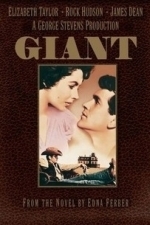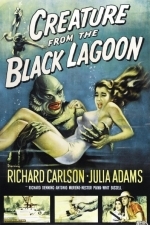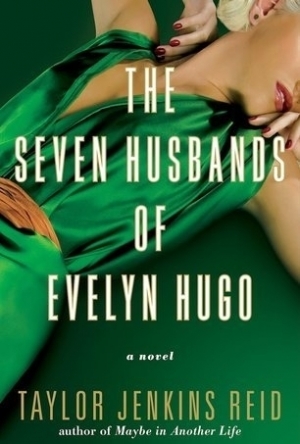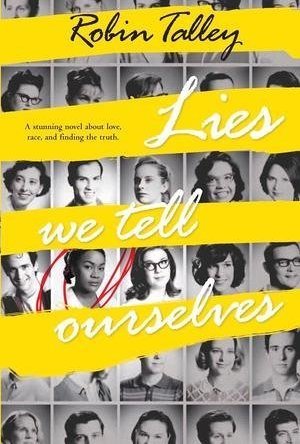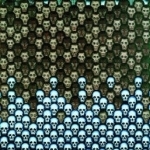
University of Hunger: Collected Poems & Selected Prose
Book
The Guyanese poet Martin Carter (1927-97) was one of the foremost Caribbean writers of the 20th...
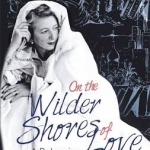
On the Wilder Shores of Love: A Bohemian Life
Lesley Blanch and Georgia de Chamberet
Book
Most famous for The Wilder Shores of Love, her book about four women travellers, Lesley Blanch was a...
The German-Jewish Cookbook: Recipes and History of a Cuisine
Gabrielle Rossmer Gropman, Sonya Gropman and Nach Waxman
Book
This cookbook features recipes for German-Jewish cuisine as it existed in Germany prior to World War...
LoganCrews (2861 KP) rated Giant (1956) in Movies
Sep 20, 2020
Out with the old, in with the new - for good and ill. Just a phenomenal epic in every way, doesn't feel a second of its gargantuan 201 minute runtime and honestly I wouldn't have minded another 201 minutes. Might very well be the best of its kind - a towering masterclass in K.O. acting (everyone is staggeringly great of course but James Dean gives what might unquestionably be the best performance of the 1950s), compelling characters, a laundry list of weighty (and still timely) themes (including but not limited to culture shock, classism, racial bigotry, sexism, toxic masculinity, parental selfishness, the intrinsic oppression that comes with capital or the lack thereof, and how we cope with the never-ending passage of time) handled with an uncommon sensitivity for the time, stunning cinematography, one hell of a grouping of period atmospheres, and no shortage of subversion. Just chock full of countless memorable quotes and damn good scenes one fired right after the other for almost three and a half hours. Comes temptingly close but not quite seamless, my biggest gripe is that with all this time we still never really get to see any of these couples *fall* in love - some of course had to be that way, sure (i.e. Hudson and Taylor as they reconcile with the trials of a whirlwind romance) but what about any of the others? Also has a couple arguably problematic tidbits, but honestly they're still far trumped by its sheer amount of nuance and perceptiveness - its willingness to confront itself, and the way it depicts time as an anomaly - stagnant one moment then stealthy the next. The only thing more fearsome than the years is yourself.
Matthew Krueger (10051 KP) rated Creature from the Black Lagoon (1954) in Movies
May 21, 2020
The plot: Remnants of a mysterious animal have come to light in a remote jungle, and a group of scientists intends to determine if the find is an anomaly or evidence of an undiscovered beast. To accomplish their goal, the scientists (Antonio Moreno, Richard Carlson, Richard Denning, Whit Bissell) must brave the most perilous pieces of land South America has to offer. But the terrain is nothing compared to the danger posed by an otherworldly being that endangers their work and their lives.
Creature from the Black Lagoon was filmed in 3D and originally projected by the polarized light method. The audience wore viewers with gray polarizing filters, similar to the viewers most commonly used today. Because the brief 1950s 3D film fad had peaked in mid-1953 and was fading fast in early 1954, many audiences actually saw the film "flat", in 2D. Typically, the film was shown in 3D in large downtown theaters and flat in smaller neighborhood theaters.
For marketing reasons, a comedic appearance with Abbott and Costello on an episode of The Colgate Comedy Hour aired prior to the film's release. The appearance is commonly known as Abbott and Costello Meet the Creature from the Black Lagoon. Ben Chapman reprised his role as the Gill-Man for the program.
The film is recognized by American Film Institute in these lists:
2001: AFI's 100 Years...100 Thrills – Nominated
2003: AFI's 100 Years...100 Heroes & Villains:
Gill-man – Nominated Villain
Iike i said a classic universal monster.
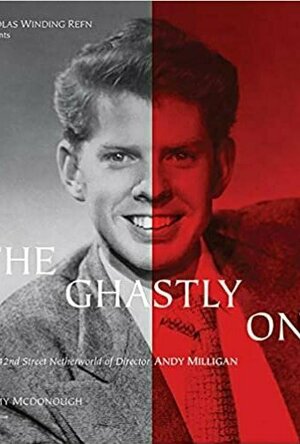
The Ghastly One: The Sex-Gore Netherworld of Filmmaker Andy Milligan
Book
Nicolas Winding Refn presents one of the most acclaimed film director biographies ever published....
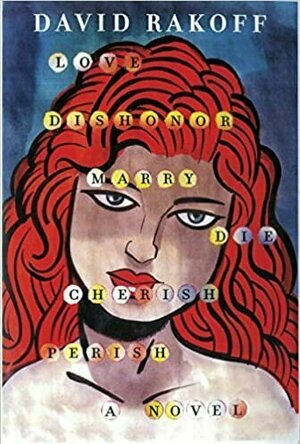
Love, Dishonor, Marry, Die, Cherish, Perish
Book
From the incomparable David Rakoff, a poignant, beautiful, witty, and wise novel in verse whose...
Lyndsey Gollogly (2893 KP) rated The Seven Husbands Of Evelyn in Books
May 14, 2024
Book
The Seven Husbands of Evelyn Hugo
By Taylor Jenkins Reid
⭐️⭐️⭐️⭐️
Aging and reclusive Hollywood movie icon Evelyn Hugo is finally ready to tell the truth about her glamorous and scandalous life. But when she chooses unknown magazine reporter Monique Grant for the job, no one is more astounded than Monique herself. Why her? Why now?
Monique is not exactly on top of the world. Her husband has left her, and her professional life is going nowhere. Regardless of why Evelyn has selected her to write her biography, Monique is determined to use this opportunity to jumpstart her career.
Summoned to Evelyn's luxurious apartment, Monique listens in fascination as the actress tells her story. From making her way to Los Angeles in the 1950s to her decision to leave show business in the '80s, and, of course, the seven husbands along the way, Evelyn unspools a tale of ruthless ambition, unexpected friendship, and a great forbidden love. Monique begins to feel a very real connection to the legendary star, but as Evelyn's story near its conclusion, it becomes clear that her life intersects with Monique's own in tragic and irreversible ways.
I went into this book hoping that the hype was worth it. It certainly was you completely forget that this is a fictional character and start thinking she’s real. The tragic underlying lying story is not being able to love who you want to until it’s just to late. This was genuinely heartbreaking In places and really well written. I didn’t think it was as mind blowing as some say but it was definitely a very very interesting read. Also how self destructive some people can be especially when they want that fame in life.
Hazel (1853 KP) rated Lies We Tell Ourselves in Books
Dec 17, 2018
<i>Lies We Tell Ourselves</i> by Robin Talley is a realistic tale about the beginning of the integration of coloured people into white schools in late 1950s America. In Virginia it is 1959 and ten Negros are beginning their first day at Jefferson Highschool. The experience is narrated from one of the ten, Sarah’s, perspective. In other parts of the novel the voice changes to that of Linda, a particularly nasty white girl, who is one of countless students opposed to integration.
Although many young people will have been taught about the black civil right movement it is still shocking to read about the horrible things they had to endure. By writing in the first person, Talley encourages the reader to try to understand how they would feel in a similar situation. Sarah and her friends instantly become the victims of verbal and physical abuse that members of authority turn a blind eye to.
To Sarah, Linda is a nasty spoilt bully who, although does not join in with the taunting and abuse, is as bad as the rest of them. Through reading Linda’s account it becomes clear that her behaviour has a lot to do with her home life, in particularly with her father’s attitude towards her. After being forced to partner Sarah for a French project Linda begins to question why there is so much emphasis on skin colour, however not wanting to be shunned by her own friends she keeps these thoughts to herself.
Sarah is also struggling to come to terms with her sexual preference for girls. It has been drilled into her that these thoughts are a sin. She hides her true feelings from everyone and constantly berates herself mentally for being “unnatural”. But it turns out she may not be the only one with these thoughts.
The lies referred to in the title are not the blatant or harmful lies but rather the lies the characters believe or even want to believe. Each chapter begins with a lie that reflects what is occurring in the novel at that time; for example “There’s no need to be afraid” and “I don’t care what they think of me.” This is an interesting way of telling the story as it emphasizes Sarah’s determination to keep going despite what she is subjected to. It also reveals the mental struggles she faces. On the other hand the lies disclose Linda’s conflicting feelings towards the South’s current situation and segregation laws.
Although not a religious novel, each part begins with the title of a Christian hymn. It was the norm for everyone to go to church and, despite the separate churches, was something black and white people did. Sarah and Linda have faith in God yet they both use the bible’s teachings for opposing arguments. The religious aspect also highlights Sarah’s self-hatred and belief that she has fallen into sin.
Unfortunately in today’s world there are still issues with racism and homophobia however after reading <i>Lies We Tell Ourselves</i> it is evident that these situations have vastly improved, at least in the Western world, since the 1950s. Without children such as Sarah going through these horrible experiences nothing would have changed. There would still be separate schools, slavery and inaccurate opinions about race inequality. America has a lot to thank these brave students who were the first to create mixed race schools.
Overall this is a brilliant book. Well written and realistic, it really draws the reader in to the characters’ stories. Although <i>Lies We Tell Ourselves</i> is a work of fiction, it is historically accurate and can teach a lot about America’s history to young adults today.
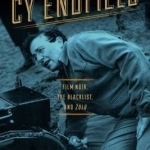
The Many Lives of Cy Endfield: Film Noir, the Blacklist, and Zulu
Book
Cy Endfield (1914-1995) was a filmmaker who was also fascinated by the worlds of close-up magic,...

